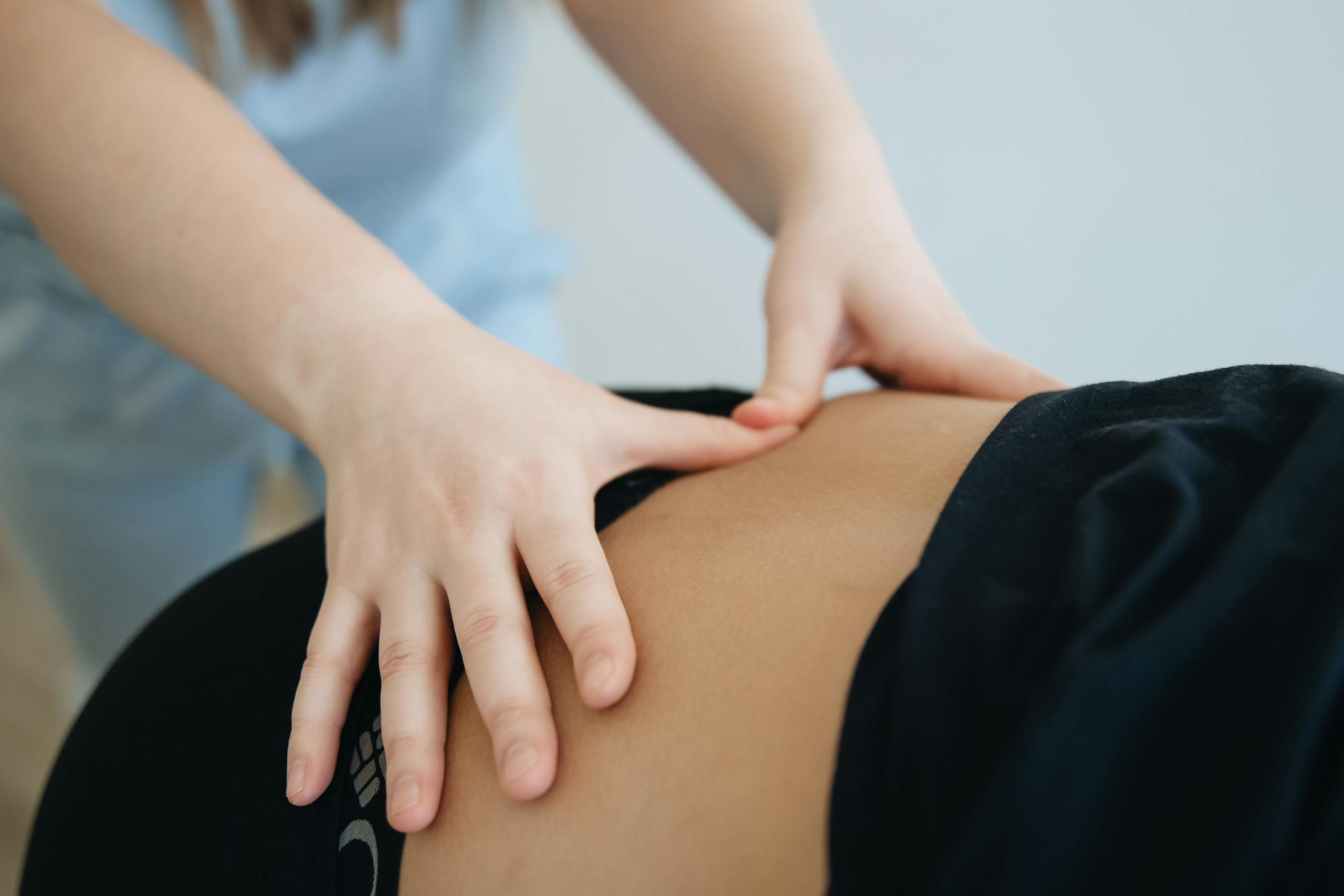Understanding the Relationship Between Low Back Pain and Hip Joint Pain: Why People are Often Confused and How to Tell Them Apart
Low back pain (LBP) and hip joint pain are anatomically distinct, but their symptoms often overlap, making it difficult for both patients and healthcare providers to differentiate between them. Low back pain typically originates from the lumbar spine and is felt around the lower back or upper buttocks. When nerves like the sciatic nerve are involved, pain can radiate down the back of the thigh and leg. In contrast, hip joint pain usually arises from the ball-and-socket joint between the femur and pelvis and can be felt in the groin, outer thigh, or upper buttocks—making the pain hard to pinpoint. Weight-bearing movements like walking or climbing stairs often aggravate hip pain.
1. Anatomy and Pain Characteristics
- Lumbar Spine and Low Back Pain:
The lumbar spine is composed of five vertebrae, intervertebral discs, facet joints, ligaments, and surrounding muscles. Nerve roots from the spinal cord pass through this region, and conditions like herniated discs or spinal stenosis can compress nerves, leading to pain that radiates to the buttocks or down the back of the leg (sciatica). Back pain often worsens with prolonged sitting or forward bending and improves with stretching or massage. - Hip Joint and Hip Pain:
The hip joint is a deep ball-and-socket joint where the head of the femur meets the acetabulum of the pelvis. It is stabilized by cartilage, the labrum, joint capsules, ligaments, and muscles. Pain from hip joint disorders is typically felt in the groin, front or side of the thigh, or outer buttock. For instance, hip arthritis may cause a dull ache deep in the groin that worsens with walking or climbing stairs. Hip pain is often linked to hip movement, such as bending, rotating, or bearing weight on the joint.
2. Why Confusion Happens: Real-Life Examples
The primary reason for the confusion between hip and back pain is overlapping pain locations and shared nerve pathways. Lumbar nerves (especially L2–L4) supply the groin and anterior thigh, while lower roots (L4–S1) affect the buttock and posterior thigh. As a result, a spinal problem can present as groin pain, and conversely, hip joint issues may manifest as back discomfort.
- Case 1: A man in his 50s complained of pain on the side of his hip. Initial X-rays showed only mild arthritis, and conservative treatments failed. An MRI later revealed L3–L4 nerve compression in the spine. After spinal surgery, the hip-area pain resolved completely—showing that the source was spinal, not the hip joint.
- Case 2: A physically active woman in her 30s had long-standing low back pain. Despite multiple treatments and being advised surgery, imaging didn’t show severe spinal problems. Further testing identified femoroacetabular impingement (FAI) in her hip. After hip surgery, her back pain dramatically improved. This case illustrates how hip joint dysfunction can overload the spine and mimic chronic back pain.
These cases show why it’s important not to jump to conclusions based on symptoms alone. Many patients who visit for back pain may actually have hip joint issues, and vice versa.
3. How to Differentiate Between Back and Hip Pain
To reduce diagnostic confusion, both patients and clinicians can use the following distinguishing features:
- Pain Location:
- Low back pain tends to radiate down the lower back, buttocks, and back of the thigh.
- Hip joint pain usually appears in the groin, front of the thigh, or outer hip.
- Pain During Movement:
- If pain worsens with sitting, bending forward, or lifting, the spine is likely involved.
- If pain worsens with walking, stair use, or standing up after sitting, the hip is a more likely source.
- Physical Tests:
- For hip disorders, orthopedic tests like the FABER or FADIR maneuvers will reproduce pain.
- For lumbar conditions, nerve stretch tests (e.g., straight leg raise) often aggravate symptoms.
- Imaging and Diagnostic Injections:
- X-rays and MRIs can visualize joint or disc pathology.
- Diagnostic injections (e.g., anesthetic to the hip or spine) can help confirm the origin of pain. Relief following an injection points to the injected area as the pain source.
Here’s a quick comparison chart:
| Feature | Low Back Pain (LBP) | Hip Joint Pain |
|---|---|---|
| Pain Location | Lower back, buttocks, posterior thigh | Groin, anterior/lateral thigh, outer hip |
| Aggravating Movements | Sitting, bending, spinal motion | Walking, stair climbing, weight bearing |
| Tests | MRI, nerve tension tests, EMG | Hip X-ray/MRI, FABER/FADIR tests, injections |
| Typical Conditions | Herniated disc, spinal stenosis, sprain | Hip osteoarthritis, femoroacetabular impingement (FAI) |
4. When the Hip Causes Low Back Pain: Mechanical Links
Hip dysfunction can lead to mechanical overload of the spine, causing or worsening low back pain. When the hip joint lacks adequate mobility, the lumbar spine compensates by moving more, increasing strain and instability. Studies show that people with back pain often have reduced hip mobility and excessive lumbar motion.
- Hip Osteoarthritis:
Common in middle-aged and older adults, hip arthritis causes inflammation and pain that can extend to the lower back. When undiagnosed, it is often mistaken for spinal issues, delaying proper treatment. - Femoroacetabular Impingement (FAI):
In younger, active individuals, FAI occurs when bony overgrowth causes abnormal contact within the hip joint. It limits motion, causes pain during flexion or rotation, and over time, can place stress on the spine—leading to chronic back pain. - Other Hip Abnormalities:
Conditions like hip dysplasia, post-dislocation arthritis, or abnormal femoral rotation can alter walking mechanics and increase lumbar load, resulting in compensatory back pain.
Conclusion: What Should You Do?
To accurately manage your pain, it’s important to distinguish whether it stems from the hip or the spine. Pay attention to where the pain starts, when it worsens, and which movements provoke it. If you feel pain primarily in the groin or front of the thigh, worsened by walking or standing, a hip problem is likely. If the pain runs from your lower back to the back of the thigh, especially during sitting or bending, the spine may be the culprit.
Accurate diagnosis involves a combination of physical examination, imaging, and sometimes diagnostic injections. It’s best not to self-diagnose but to provide your doctor with detailed descriptions of your pain so they can conduct the right tests and develop the most effective treatment plan.

